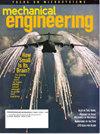混合电力推进
IF 2.1
4区 工程技术
Q2 ENGINEERING, MECHANICAL
引用次数: 3
摘要
电气化推进有望通过三种方式减少航空业的二氧化碳排放足迹:获取绿色电网电能,通过新的机身和推进系统架构改善飞机性能,以及进一步优化燃气轮机循环。用绿色电能为飞机电池组充电,并利用这些能量驱动电动推进器,从而实现零排放汽车。这是实用的轻型飞机和短期任务。用绿色电能(同样储存在地面充电电池中)推动喷气- a燃烧的燃气轮机,无论是并联还是串联涡轮电力结构都可以产生二氧化碳排放量的净减少,只要承载放电电池组重量所需的燃料燃烧不超过地面充电电池所提供的燃料燃烧减少。一些研究表明,当电池级能量密度接近500 wh /kg时,净节约是可能的,这是2030年的合理目标。电气化推进也可以实现独特的飞机配置,采用非常高效的原动机(燃气轮机),设计用于在最高效率时仅运行发电机,和/或将推进器分布在整个飞机上,以提高L/D和推进效率。本文章由计算机程序翻译,如有差异,请以英文原文为准。
Hybrid Electric Propulsion
Electrified propulsion holds the promise of reducing aviation’s CO2 emissions footprint through three means: access to green grid electric energy, improvements in aircraft performance through new airframe and propulsion system architectures and enabling further optimization of the gas turbine cycle. Charging an aircraft battery pack with green electric energy and using this energy to drive electric propulsors results in a zero emissions vehicle. This is practical for light aircraft and short missions. Boosting a Jet-A burning gas turbine with green electric energy (again stored in a ground charged battery), in either a parallel or series turbo-electric architecture can yield a net reduction in CO2 emissions, as long as the fuel burn required to carry the weight of a discharged battery pack does not overcome the reduction in fuel burn afforded by the ground charged battery. Several studies have indicated that a net savings is possible with cell level energy densities approach ∼ 500 whr/kg, a reasonable target for the 2030 time frame. Electrified propulsion can also enable unique aircraft configurations, employing a veryhigh efficiency prime mover (gas turbine) designed for running only a generator at peak efficiency, and/or distributing the propulsors throughout the aircraft, for improvement in L/D and propulsive efficiency.
求助全文
通过发布文献求助,成功后即可免费获取论文全文。
去求助
来源期刊

Mechanical Engineering
工程技术-工程:机械
CiteScore
0.60
自引率
0.00%
发文量
21
审稿时长
6-12 weeks
期刊介绍:
Information not localized
 求助内容:
求助内容: 应助结果提醒方式:
应助结果提醒方式:


